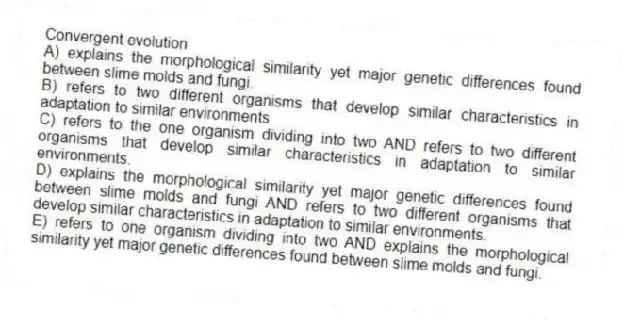
Convergent evolution
A) explains the morphological similarity yet major genetic differences found between slime molds and fungi.
B) refers to two different organisms that develop similar characteristics in adaptation to similar environments
C) refers to the one organism dividing into two AND refers to two different organisms that develop similar characteristics in adaptation to similar environments.
D) explains the morphological similarity yet major genetic differences found between slime molds and fungi AND refers to two different organisms that develop similar characteristics in adaptation to similar environments.
E) refers to one organism dividing into two AND explains the morphological similarity yet major genetic differences found between slime molds and fungi.
Correct Answer:
Verified
Q46: Fungi are often capable of locomotion through
Q47: Protozoans are usually multicellular and found in
Q48: Fungus grows well on fruits and many
Q49: Lyme disease is transmitted by
A) ticks.
B) lice.
C)
Q50: Slime molds and water molds are types
Q52: Algae may directly infect humans and cause
Q53: Most of the medically important multicellular parasites
Q54: When cellular slime molds run out of
Q55: Pediculus humanus
A) only uses humans as a
Q56: Typically, arthropods serve as vectors of disease,
Unlock this Answer For Free Now!
View this answer and more for free by performing one of the following actions

Scan the QR code to install the App and get 2 free unlocks

Unlock quizzes for free by uploading documents